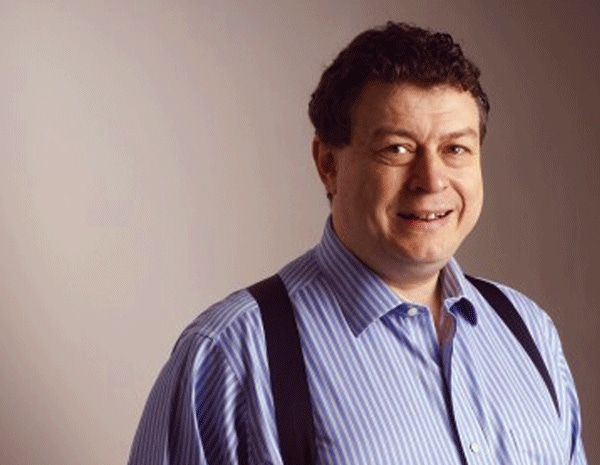Rory Sutherland, VP of advertising firm Ogilvy, champions the mobile as the most potent tool for creating behavioural change.
August 31, 2011

Rory Sutherland began his career in advertising and marketing at Ogilvy in 1990, working on a then obscure US brand called Microsoft. In the 21 years since he’s risen to the position of vice president of Ogilvy Group and creative director of UK arm OgilvyOne and has seen a lot of change come about through the rapid adoption of technology.
Sutherland doesn’t refer to what he does as marketing or advertising, instead he calls it the application of behavioural economics across the marketing media and tech industries—a discipline which has led him to champion the mobile phone as the single biggest tool for inciting behavioural change.
“Mobile and digital media are very good at lots of things, which caused people to think that digital media and the web would destroy all traditional media and advertising,” he says, adding that this outcome would indeed have been likely if the marketing industry didn’t understand the idea of comparative advantage.
Comparative advantage, in Sutherland’s example, takes two islands: one island better at growing corn and even better at making bicycles than the other. Yet the best way to maximise the commercial value of the whole ecosystem is for the one island that is substantially better at making bicycles to do so, while the other country grows corn. The philosophy being that they should focus not just on what they are good at, but what they are remarkably good at. Even if one island is more efficient in the production of all goods, it can still gain by trading with a less-efficient island, as long as they have different relative efficiencies.
“We should ask how each media available to us can play to its own strengths as in to its comparative advantage, not just everything its good at. We are only just realising that TV still has the advantage of certain qualities in that it has emotional reach and the ability to create fame and buzz,” Sutherland says. “Mobile on the other hand is quite different. Its context is timeliness, the ability to engage people in sophisticated dialogue. Its advantage may actually be closer to customer service than advertising. You can’t substitute reach in one place with an equal amount of reach elsewhere. Different media are complimentary.”
Sutherland expands on the importance of context, with the notion that the value of something, while subjective, is also contextual.
“The decision you make on any issue depends on when you make that decision. Such as your decision to book a [city hire bicycle] depends on when you make that booking. If you do it in advance your attention is on high minded things like exercise, but if you make it at the last minute your attention is on low minded things like how late you are and whether it’s raining,” he says. “So you need a pricing scheme that caters to both.”
The same application of behavioural economics could be used to leverage yield management to a company’s advantage, an airline for example. “If you told customers which of ten flights to New York was the emptiest perhaps they could be tempted to pay extra,” Sutherland says. “The key is you’re generating value not through the requirement of extra resources, but through the better understanding of individual human preference. Better understanding people can help you deliver more incremental value without changing the material thing you offer.”
We all like to think that we follow through on our high minded intentions—all those charitable donations should we win the lottery, but the decision we make and the way we compare things depends where we are and at what point in the decision making process we are in. Humans can only concentrate on one thing at a time, we focus on one arbitrary metric, and make the decision on that. For years the one comparative metric for digital cameras was how many megapixels it had. It was an accessible numerical value. But we’ve recently hit the wall where ten megapixels or so is probably enough for most people, forcing the camera manufacturers to re-evaluate their situation.
“Someone might decide to move 20 miles out of town to get an extra bedroom on their house, because the attraction of an extra bedroom is very high in their consciousness at this time. But once you move, the extra room loses its novelty very quickly while the pain of the longer commute is experienced every day.
“This is how human attention distorts decision making,” Sutherland explains. “Advertisers don’t just have target audiences, they also have target moments. It’s the context in which I can persuade someone to take a bicycle rather than a car or the train. It’s one way in which mobile enjoys a significant strength, due to the fact that it is such a timely tool for communication and context.
“If you provide people with the means, then the attitudes will follow,” he says. “The mobile is the single most potent way of creating behavioural change over the next 20 to 30 years, yet our adoption of technology has already leapt ahead of our understanding of it. “Over the next ten to 15 years we will see a slowdown in technological progress.”
Sutherland disagrees that all things technological progress at an exponential rate and claims instead there are bursts of change punctuated by periods of relative stability, with perhaps small levels of incremental improvement. “What I’d like to see is the discussion move away from what is technologically possible now and towards what is the proper human use to be derived from these technologies,” he says.
About the Author(s)
You May Also Like








.png?width=300&auto=webp&quality=80&disable=upscale)


_1.jpg?width=300&auto=webp&quality=80&disable=upscale)


.png?width=800&auto=webp&quality=80&disable=upscale)